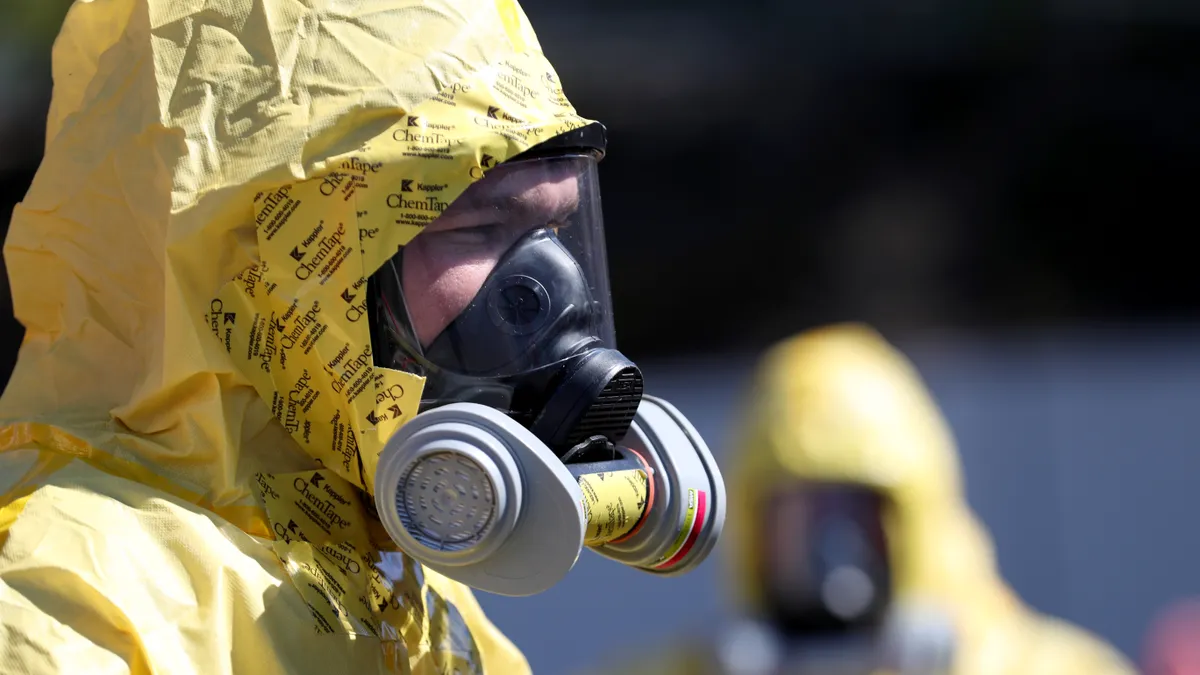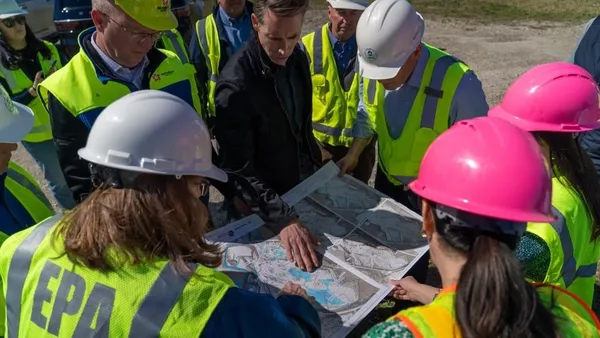- Results: Clean Harbors’ revenues grew by double-digit percentages again in both of its main business lines, with ongoing benefits from the 2021 acquisition of HydroChem PSC. Revenues hit $1.09 billion for environmental services and nearly $265.5 million for the Safety-Kleen sustainability division. During a Wednesday earnings call, executives said results could have been even better if head count improved — though they noted attrition rates had flattened recently, and over 1,000 people have been hired this year.
- Economic outlook: Executives said price increases and cost-reduction efforts have been successful in offsetting inflation. CEO Alan McKim said he has managed the company through multiple recessions before, and Clean Harbors is well-positioned if one occurs, but signs of demand for its services appear to only be growing. He cited positive factors such as “infrastructure spending, strict enforcement of U.S. and Canadian regulations, captive incinerator closures, a robust project pipeline and reshoring of multiple industries."
- M&A: During the quarter, Clean Harbors bought a Georgia-based oil re-refinery and waste oil collection business that serves the Southeast, which will allow it to boost production and reduce transportation costs. McKim said further acquisitions would be one priority for capital allocation, along with expansion of existing assets. The company also divested oil and gas assets in western Canada for proceeds of $18 million.
- Capital expenditures: The company plans to invest in capacity expansions across multiple areas — landfills, re-refineries, recycling, water treatment — though a hazardous waste incinerator in Nebraska remains the most notable project. The company anticipates spending upward of $50 million on that this year, ahead of a planned 2025 opening. Executives expressed no concern about competition from a pending Veolia project in Arkansas they discussed that could become active in the same time frame.
- ESG: “As ESG [interest] becomes more prevalent, we are seeing interest in our sustainable base oil and blended products grow exponentially,” said McKim, noting the company can now charge higher prices. “Years ago, we were forced to discount our base oil output to move volumes. Those days are long gone.”
- PFAS: Chief Operating Officer Eric Gerstenberg said the company continues to believe “RCRA-permitted high-temperature thermal destruction through our units is really the preferred disposal methodology for PFAS contaminants,” citing tests with a third-party company that found such emissions are "five to eights time the order of magnitude safer than the most stringent state and federal guidelines out there,” but growth potential has not yet been factored into financial forecasts.
- Competition: In response to an analyst question about consolidation in the hazardous waste landfill space (likely a reference to Republic Services’ acquisition of US Ecology), Chief Financial Officer Michael Battles said “that’s good for Clean Harbors,” adding, “they’re going to be very disciplined in their pricing, and I think we're the beneficiary of that.”
- Looking ahead: Clean Harbors is raising full-year guidance in multiple categories, including what Battles described as a significant increase in expectations for adjusted earnings before interest, taxes, depreciation and amortization. That category could now hit $1.005 billion for 2022, along with possible adjusted free cash flow of $350 million.

Clean Harbors says industrial reshoring is helping waste pipeline, reports Georgia acquisition
Executives at the environmental services company also discussed capacity expansion, PFAS and ESG impacts.

Recommended Reading
- Q2 earnings results for major waste and recycling companies By • Updated Aug. 10, 2022
- Clean Harbors Q1 boosted by HydroChem PSC deal, growing environmental services demand By Cole Rosengren • May 4, 2022













